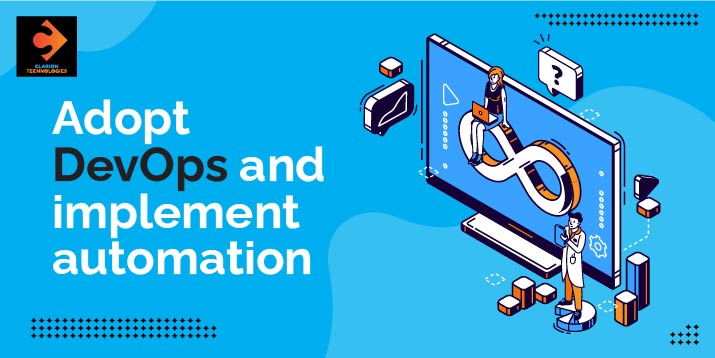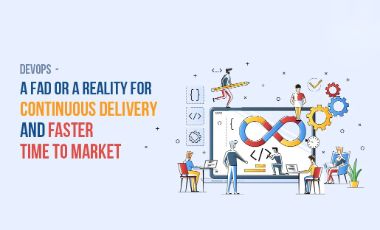During the early 2000s, the widespread adoption of the agile methodology brought about a significant shift in software and product development practices. However, shortly after becoming an industry norm, a notable gap emerged: the operational aspects of deploying and managing software products were overlooked in this revolution.
In response to this oversight, the concept of DevOps emerged, aiming to integrate development and operations teams. This prompts the question: does DevOps supplant agile, or do they operate in tandem? The relationship between agile and DevOps reveals both disparities and parallels. They can coexist within an organization, each with its distinct characteristics and contributions.
Research conducted by Global Newswire projects that the global DevOps market is poised for substantial growth, with an estimated market size of USD 25.5 billion by 2028, compared to its base value of USD 10.4 billion in 2023. This trajectory suggests a Compound Annual Growth Rate (CAGR) of 18.95%, with an anticipated value of USD 12.2 billion by 2026. Source
What is Agile Methodology?
Agile represents an iterative methodology for project management and software development, emphasizing collaboration, customer input, and swift releases. Originating in the early 2000s within the software development realm, Agile enables teams to swiftly respond to evolving market dynamics and customer needs.
Under agile, initial planning and design occur upfront, followed by incremental development and extensive stakeholder engagement. This iterative process allows for continuous adjustments, often resulting in quicker product releases compared to traditional waterfall methods. This approach offers numerous advantages, notably the ability to address customer concerns in real-time if software fails to meet expectations.
Agile comprises a variety of methodologies, including scrum and eXtreme Programming (XP), amalgamated from past development practices. The culmination of these methodologies is encapsulated in the Agile Manifesto, featuring 12 principles founded on four fundamental values.
- Prioritizing human connections and communication over rigid processes and tools
- Functional software over exhaustive documentation
- Client engagement over contractual negotiations
- Adapting to change over adhering strictly to a plan
What is DevOps Methodology?
DevOps stands as a software development approach that accelerates the building, testing, and deployment of software through the integration of agile methodologies. This incorporates enhanced automation and strengthened collaboration between development and operations teams. While both agile and DevOps encompass development, testing, and deployment, DevOps extends beyond traditional agile by incorporating operations.
The core objective of DevOps is to bridge the gap between developers, responsible for creating application software, and operations, tasked with running and maintaining the software infrastructure. It replaces the outdated practice of development teams solely crafting applications and then handing them off to operations teams with limited insight into the development process. In a DevOps setting, developers and operations teams collaborate throughout the entire software lifecycle, from development to deployment and management.
Key frameworks for understanding DevOps include the "Three Ways" and "CALMS." The "Three Ways" emphasize a cultural shift towards cohesive collaboration between development and operations, increased automation for speed and quality, and a focus on continuous improvement and embracing failure. CALMS, an acronym for Culture, Automation, Lean, Measurement, and Sharing, underscores the importance of cultural alignment, automation for efficiency, lean principles for continuous improvement, measurement for process optimization, and sharing of best practices within the DevOps community.
When DevOps and Agile work together
DevOps represents both an evolution of agile methodologies and a crucial component that enhances agile practices. It extends the innovative concepts of agile to operations processes, bridging the gap between development and operations teams. While agile principles touch upon continuous software delivery, DevOps fully realizes this concept by integrating operations considerations into delivery pipelines. Enhanced communication is paramount in DevOps, requiring improved collaboration across teams. Agile methodologies, particularly scrum, facilitate this communication through rituals like daily standups, planning sessions, and retrospectives. Together, DevOps and agile form a symbiotic relationship, fostering agility, collaboration, and continuous improvement throughout the software development lifecycle.
Benefits of DevOps methodology include accelerated software delivery, enhanced collaboration between development and operations teams, and increased reliability and stability of software deployments. By automating manual processes and emphasizing continuous integration and delivery, DevOps reduces lead times, allowing for faster releases and more efficient feedback loops. This approach also promotes a culture of shared responsibility and collaboration, breaking down silos between teams and fostering a more cohesive working environment. Ultimately, DevOps enables organizations to respond more quickly to market demands, deliver higher-quality software, and achieve greater overall efficiency and competitiveness.
Agile testing vs traditional testing
Agile testing differs from traditional testing by its iterative and incremental nature, where testing activities are integrated throughout the development process rather than being confined to a separate phase. In agile testing, emphasis is placed on frequent testing, rapid feedback, and collaboration between developers and testers to ensure early detection and resolution of issues, promoting higher quality software delivery.
Agile vs DevOps: Key similarities and differences
Agile and DevOps are interconnected yet separate methodologies in software development and project management, each characterized by its own set of principles, practices, and objectives.
#1. Objective
Agile: It's a software development approach aiming to deliver high-quality, customer-focused software through incremental iterations. It enhances teamwork and flexibility to meet changing requirements.
DevOps: Aims to unite development and operations teams, stressing automation, continuous integration, delivery, and collaboration for quicker, more dependable software delivery.
#2. Scope
Agile: Concentrates on software development, covering building, testing, and delivery phases.
DevOps: Encompasses the entire software delivery lifecycle, from code creation and testing to deployment, monitoring, and upkeep.
#3. Teams and functions
Agile: Teams include developers, testers, product owners, and scrum masters, with clearly defined roles and specialization.
DevOps: Fosters cross-functional teams with diverse skill sets, merging development and operations responsibilities.
#4. Approach
Agile: Utilizes frameworks like Scrum and Kanban for iterative development, backlog management, and sprint planning.
DevOps: Implements continuous integration, delivery, infrastructure automation, testing, and deployment practices.
#5. Release frequency
Agile: Typically results in regular but less frequent releases, with each iteration potentially delivering a shippable increment.
DevOps: Encourages more frequent, smaller releases, sometimes multiple times per day or week, to shorten lead times and improve feedback loops.
#6. Customer focus
Agile: Stresses close collaboration with customers and stakeholders to ensure software meets their evolving needs.
DevOps: Delivers reliable software quickly and consistently to customers, emphasizing automation and monitoring.
#7. Metrics
Agile: Metrics like velocity and burndown charts gauge progress and team performance.
DevOps: Uses metrics such as cycle time, deployment frequency, and mean time to recovery to evaluate delivery process efficiency.
#8. Work culture
Agile: Cultivates a culture of collaboration, transparency, and adaptability within development teams.
DevOps: Fosters a collaborative, shared responsibility culture across development and operations teams.
The Crux: Agile and DevOps essential for Digital Transformation
In essence, Agile and DevOps stand at the forefront of the digital transformation landscape, fostering collaboration and enhancing work environments for developers, testers, and business executives alike. These models streamline critical processes, overcoming inherent limitations while requiring minimal hardware investment, thus enabling the creation of modern applications and infrastructure seamlessly.
From streamlining legacy systems with API integration to enabling one-click deployment and advancing development goals with continuous integration and delivery pipelines, Agile and DevOps empower software teams and testing service providers for future-ready transitions. In essence, Agile and DevOps are equipped to navigate the rapidly evolving digital landscape, meeting customer expectations and surpassing competitive benchmarks. By leveraging these methodologies together, diverse development challenges can be effectively addressed.
If you're seeking to overcome development hurdles amid market unpredictability and legacy practice limitations, Clarion Technologies with its team of skilled DevOps engineers stands ready to propel you toward success with tailored solutions.








